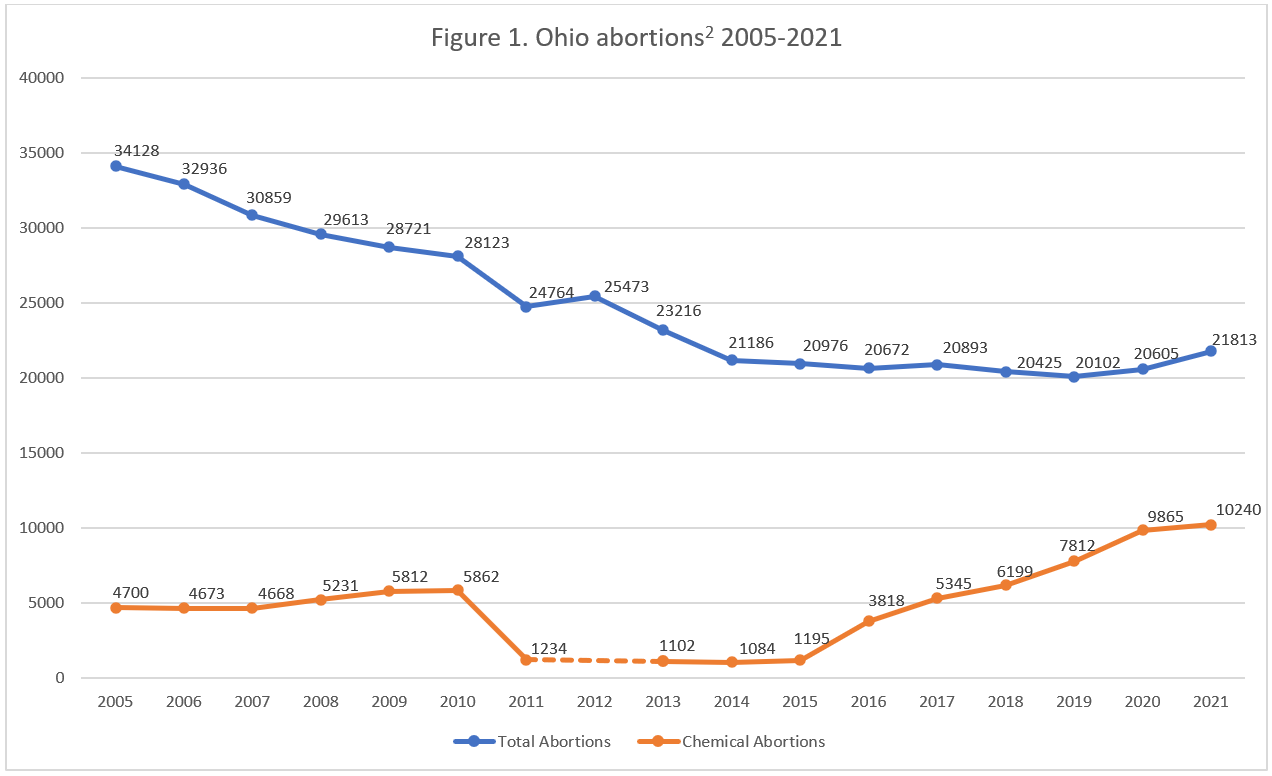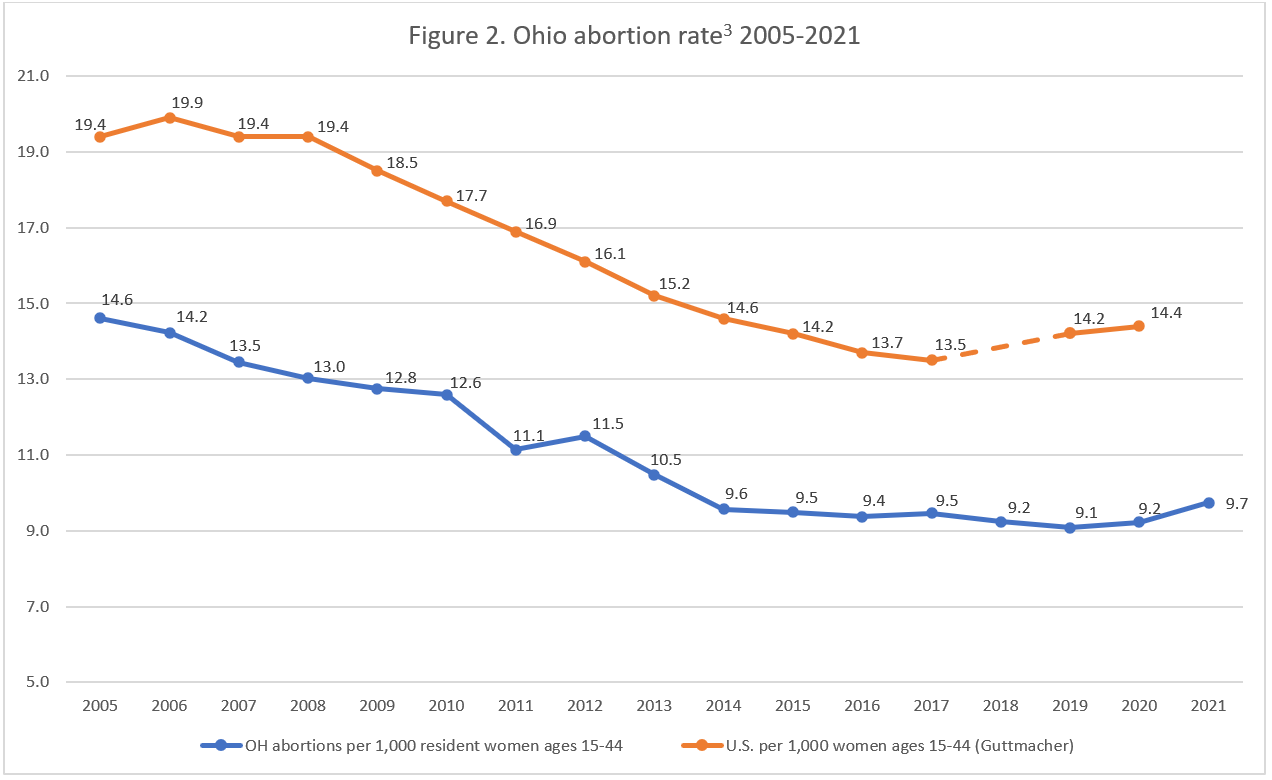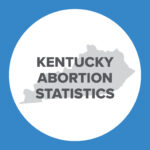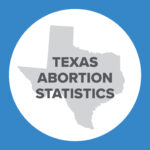Abortion Reporting: Ohio (2021)
Ohio’s 2021 abortion report was published in September 2022 by the Ohio State Department of Health. Ohio’s abortions increased from 2020.
Statistics and Changes in Ohio Abortions, 2020-2021

This report does not include information on Planned Parenthood’s Ohio abortion market share.
Abortion Totals and Trends
In 2021, there were 21,813 abortions reported in Ohio, an increase of almost six percent from 2020 (Fig.1). Chemical abortions jumped four percent from the previous year, increasing from 9,865 in 2020 to 10,240 in 2021. Chemical abortions made up 47 percent of the state total in 2021. Ohio’s 2021 abortion rate was 9.7 abortions per 1,000 women of childbearing age, as estimated by the Charlotte Lozier Institute (CLI) – an increase of more than five percent (Fig. 2). By November 2022, 24 states had released 2021 abortion reports, of which 17 showed that abortions had increased from the year before.
State Report Summary
The vast majority of Ohio abortions (95 percent) were reported to have been performed on resident women, while five percent were obtained by nonresidents. Nine percent of Ohio abortions were performed on girls ages nineteen and younger (including two percent on girls under the age of 18), and 59 percent were performed on women in their twenties, with 29 percent on women ages 20 to 24 and 30 percent on women ages 25 to 29. Twenty-nine percent were performed on women in their thirties, and three percent were performed on women ages 40 and older.
Ten percent of Ohio abortions were on women who had not graduated from high school, and 39 percent were performed on women with a high school diploma or its equivalent as their highest level of education. Twenty-three percent were on women with some college but no degree, and 20 percent were obtained by women who had received an associate degree or more. Education was not reported for nine percent of the abortions that occurred in Ohio.
Similar to 2020, eighty percent of the abortions were obtained by unmarried women, and 12 percent were performed on married or separated women. Marital status was not reported for eight percent of the abortions. Twenty-two percent of the abortions were on women with no previous pregnancies; 18 percent were performed on women with one prior pregnancy, and 56 percent were on women with two or more previous pregnancies. The number of previous pregnancies was unreported for five percent of the abortions.
Fifty-six percent of the abortions were on women who reported no previous abortions, compared to 22 percent on women with one prior abortion and 16 percent on women with two or more abortions. Thirty-two percent of the abortions were conducted on women with no living children, while 25 percent were on women with one child and 36 percent on women with more than one. The number of previous abortions was not reported for six percent, and the number of living children was not reported for seven percent.
In 2021, 43 percent of Ohio abortions were performed on black women. Forty percent were obtained by white women, and three percent were obtained by Asian or Pacific Islander women. Seventy-six abortions (0.3 percent) were on Native American women, and four percent were on women of multiple races. Race was not reported for nine percent of the abortions. CLI estimates that the black abortion rate was 28.3 abortions per 1,000 women of childbearing age, 5.6 times higher than the white rate of 5.0. Seventy-four percent of Ohio abortions were on non-Hispanic women, while five percent were on Hispanic women, and 21 percent on women of unknown ethnicity.
Ohio allows multiple methods to be reported for each abortion. In 2021, there were 21,843 procedures used, compared to the 21,813 abortions reported in the state. Forty-seven percent of the abortions were chemical. Forty-two percent were performed using suction curettage, and 11 percent were performed using dilation and evacuation. There were three abortions that used dilation and extraction (the same procedure used in partial-birth abortions), and one hysterectomy abortion. There were 10 abortions performed using other unspecified, surgical procedures.
Sixty percent of Ohio abortions occurred at eight weeks of gestation or earlier. A little more than a quarter (26 percent) were performed between nine and 12 weeks, and 11 percent occurred between 13 and 18 weeks of gestation. Two percent were performed between 19 and 20 weeks of gestation, and 156 abortions (0.7 percent) were performed at 21 weeks or later. More than one method of determining gestational age could be reported for each abortion. Ultrasound was used to estimate gestational age for the majority of abortions (86 percent), and the last menstrual period was used for 14 percent. A clinical exam was used in eight cases, and some other means in five cases.
During the time period covered by this report, Ohio limited abortion at viability except to protect a woman’s life or a major bodily function. Beginning at 19 weeks of gestation, Ohio required that doctors test to see if the unborn baby was viable. Of the 486 abortions performed at 19 weeks or later in 2021, two were performed on viable babies. Ultrasound was used to determine viability in advance of 482 of the abortions; in addition, the babies’ estimated weight was used in three cases and genetic testing, amniocentesis, and another, unspecified method was used two times each.
In addition to limiting abortion at viability, Ohio also limited abortion at 20 weeks post-fertilization (approximately 22 weeks of gestation), except when the woman’s life or a major bodily function was in danger. In 2021, there were 27 abortions performed after 20 weeks’ post-fertilization. The report does not indicate the justification for these abortions or if they were performed because the woman’s life or a major bodily function was in danger. Thirty-six women were reported to have a condition other than “good” at the time of their abortion, but the report does not state whether any of those women obtained abortions after 20 weeks post-fertilization.
In 2021, 31 abortion reporting forms indicated that the abortion had resulted in complications.1 Multiple complications could be reported for each abortion, and 39 total complications were reported. There were 10 cases of hemorrhage, while incomplete abortion and other, unknown complications were reported in six cases. Infection occurred four times and failed abortions and hematometra each occurred two times.
Ohio also received 115 post-abortion care report forms reporting 128 complications. There were 47 failed abortions (typically referring to ongoing pregnancy) and 44 incomplete abortions (when pieces of the unborn baby or placenta were retained in the uterus). Hemorrhage occurred 13 times, while hematometra occurred 12 times. There were two infections and 10 other unspecified complications.
Ohio has an adverse event reporting system for chemical abortions; however, it is separate from the state’s annual abortion report released by the health department. When a complication arises from a chemical abortion, the doctor who administered the abortion drugs must report the complication to the Ohio State Medical Board and the health department.
Sixty-six percent of the abortions were performed on women who said they were not using contraception at the time they became pregnant, while 15 percent of the abortions were on women who were using contraception. Contraceptive use was not reported for 18 percent. Contraception was recommended after all the abortions.
Women could report having obtained multiple forms of counseling before their abortion, which is why the total number of women who sought counseling before their abortion was much greater than the total number of abortions that occurred in the state in 2021. Sixty-one percent of the abortions were performed on women who had received medical counseling, and 16 percent on women who had received counseling from social services. Psychological counseling was provided before 33 abortions (0.2 percent), and pastoral counseling was provided before 18 abortions. Five women received some other form of counseling, while 39 percent did not receive counseling. While Ohio requires that before an abortion is performed on a woman she must be provided with information about her pregnancy and alternatives to abortion at least 24 hours before her abortion, the report does not include information on this informed consent process.
The majority of Ohio abortions (84 percent) were performed in ambulatory surgical facilities. Sixteen percent occurred in non-surgical clinics, and 115 abortions (0.5 percent) were performed in hospitals.
Legislative Changes
In April 2019, Ohio Governor Mike DeWine signed a heartbeat bill into law to limit abortions after an unborn baby’s heartbeat is detected (typically around six weeks gestation). The law was blocked due to a legal challenge but when the United States Supreme Court overturned Roe v. Wade in June 2022, the law was allowed to go back into effect. Shortly after, in October 2022, the law had a preliminary injunction/14 day restraining order placed on it. As a result, as of October 2022, abortion is limited at 20 weeks’ post-fertilization in Ohio.
State Ranking
Ohio’s abortion reports are some of the best nationwide. In 2016, CLI evaluated abortion reporting across the 50 states and Ohio ranked third best. To further improve its reporting, Ohio could include the chemical abortion adverse events report in the annual abortion report the health department publishes. Furthermore, Ohio could report on implementation of its informed consent process.


- Statistics on abortion complications reported here represent a minimal number of deaths and complications, as this data is collected in a non-systematic and non-verifiable way. As such, this data cannot be used to calculate either an accurate abortion mortality rate or an accurate abortion complication rate for the state.
- This chart does not contain the number of chemical abortions reported in 2012. Ohio changed its abortion reporting formatting between 2011 and 2021, and the Ohio Department of Health was not able to confirm the number of chemical abortions reported in 2012.
- Rates were calculated by CLI using the following formula: (total number of abortions performed in Ohio ÷ number of resident women ages 15-44) x 1,000. Rates may differ slightly from previous CLI articles due to revised population estimates. Population estimates were obtained using the CDC WONDER database. Estimates for 2005-2009 are intercensal estimates of the July 1 resident population. Estimates for 2010-2019 are Vintage 2020 postcensal estimates of the July 1 resident population. Estimates for 2020-2021 are Vintage 2021 postcensal estimates of the July 1 resident population. Estimates were produced by the U.S. Census Bureau and the National Center for Health Statistics.

























